 Facebook
Facebook
 X
X
 Instagram
Instagram
 TikTok
TikTok
 Youtube
Youtube
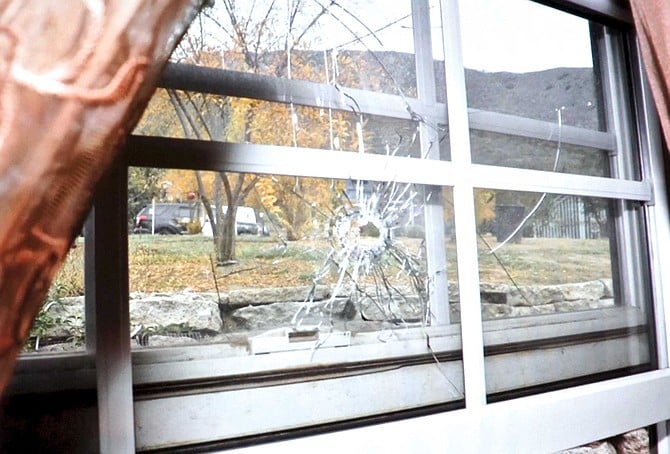
When the deputies arrived at the 15600 Adams Avenue in Pauma Valley, the sun was hovering just above the surrounding hills. It was only hours before winter solstice, and sunset was officially clocked at 4:47 pm on that day: December 20, 2018.
Deputy John Avedesian, 31, was the only one who wore sunglasses; they were prescription, so his vision was perfect. He later said the low sunlight did not bother him. But the other two deputies said that the bright rays shining directly into their eyes were blinding.
Avedesian lifted the simple latch on the white metal gate. There was no lock. It was easy to push the big gate all the way to one side, allowing the deputies to begin the walk up the driveway. It was a two-acre parcel, and the long driveway made a turn near the top, leading to a one-story hacienda-style home at the top of the slope.
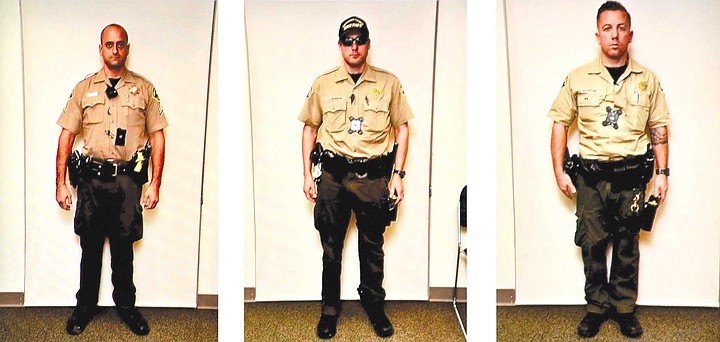
The house was perfectly backlit by the lowering sun. Though sunlight glowed around the red tile roof, the structure was just a dark silhouette to the men approaching.
Deputies had responded to a dispatch described as “unknown.” That lack of information made them wary. Avedesian started the camera hanging on his chest and quickly double-tapped it. Without speaking to each other, the deputies spread out as they approached. One deputy walked toward the front door at one end, Avedesian walked toward a window in the middle, and the third deputy walked toward the corner furthest from the front door.
The officers knew it was unwise to be bunched up into one easy target, deputy Jared Muli later explained in court. Thirty-nine-year-old Muli had been with the San Diego County Sheriff for 15 years, and on that day, he was patrolling out of the Valley Center substation, which covers Pauma Valley.
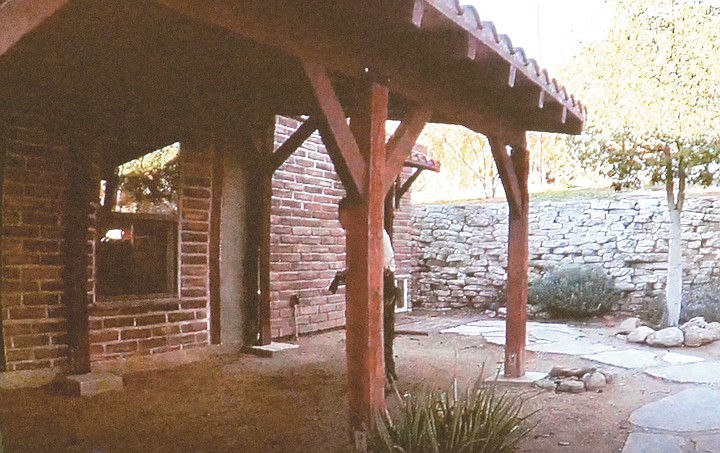
“I’m feeling unsafe”
About 30 minutes earlier, at 3:43 pm, the emergency phone operator had gotten a call from a disturbed man. “Nine-one-one emergency,” she answered, “what are you reporting?”
The man sounded excited. He said, “I need emergency! I just don’t feel safe in my own house!” He gave his address as 15628 Adams Drive in Pauma Valley, and he said his name was Jay.
Jay confirmed his address at least five times during his phone calls to the emergency number. But that 15628 number was not really his home address; that address was actually down the hill and across the road. His true home address was 15600. From the elevated position of the house at 15600, Jay probably could see deputies when they first arrived and went to 15628, across the street.
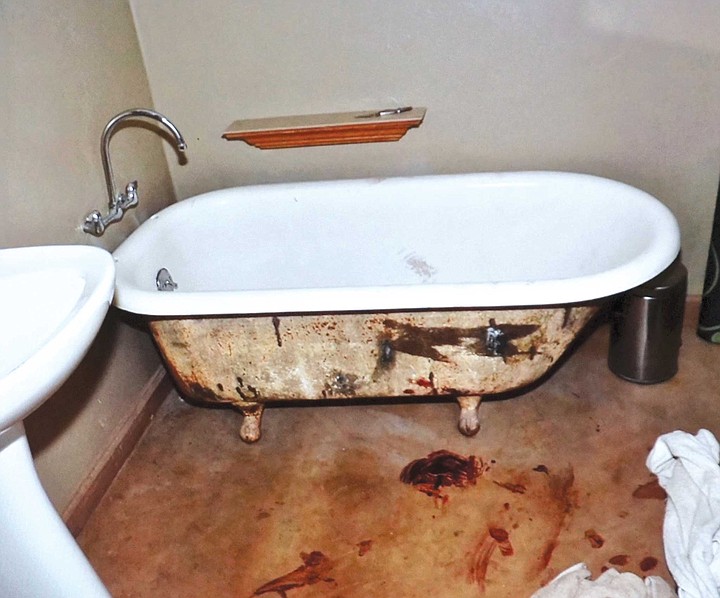
When he spoke to the emergency operator, Jay said, “I’m reporting I’m feeling a little unsafe in my home. I’m a proud American, ma’am. I’m an RN. I work for a home health agency. San Diego County, ma’am. I just moved here. I love nature.”
The operator was not distracted by his rambling. She asked, “I know you said that you don’t feel safe; is there someone in your home who’s making you not feel safe?”
Jay said, “I just feel, around my home, maybe I just don’t feel safe, ma’am.”
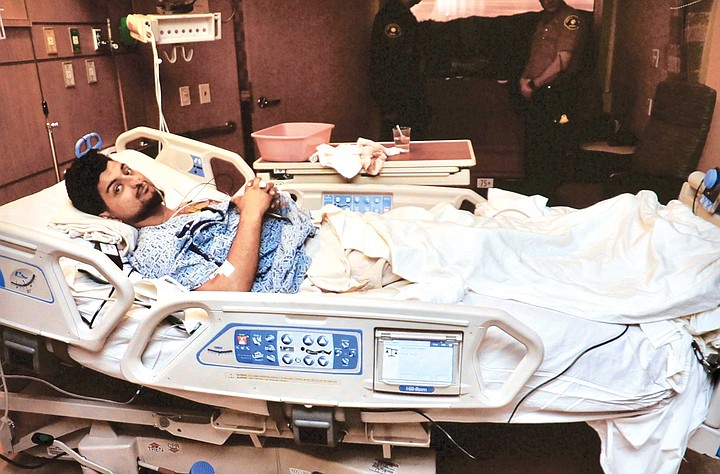
The operator asked, “Okay, do you need police or do you need paramedics?” Jay answered, “I’m a registered nurse ma’am. I need both, ma’am. I’m feeling a little distressed. I’m feeling distressed. My heart is hurting, ma’am.”
The operator was a California Highway Patrol dispatcher, and she tried to pass the call to the San Diego County Sheriff’s dispatcher, but during that time, Jay’s call dropped off. The sheriff’s dispatcher then reconnected with Jay, and she said, “We have a call entered for you not feeling safe at 15628.”
Jay answered, “Yes, I just, yeah, I’m just new to the area ma’am. And I just, I just feel unsafe. Ma’am, if you could get paramedics and the police department.”
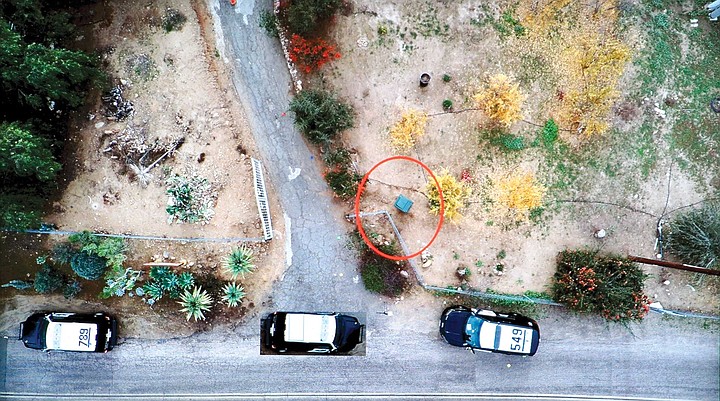
The sheriff’s dispatcher wanted to know, “Why do you need paramedics?”
Jay responded, “I just don’t feel safe.” He repeated that he was a proud American. “I’m from here. I just want to speak to someone, what else can I say ma’am?” He told her, “I’m a nurse, I would know when someone’s in an emergency or someone’s in trouble, right?” Jay rambled and cursed. He said that he was 28 years old.
The dispatcher persisted, “Okay, what do you need a paramedic for?” In reply, Jay wondered if he should call the nearby Indian reservation. The dispatcher confirmed his address yet again, and told him that deputies were en route. When she tried to get paramedics on the line to speak with Jay, his call dropped off again.
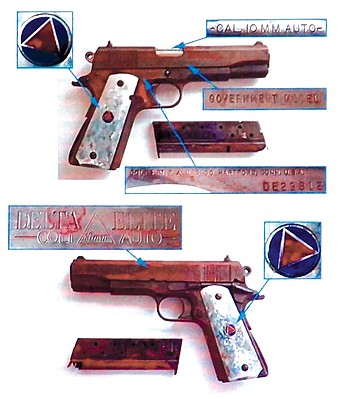
Next, Jay phoned a co-worker named Cara. They both worked at a home healthcare company; she later confirmed that Jay had been employed there as a registered nurse for about four months. Jay told Cara that he did not feel safe in his home, and he gave Cara the same incorrect house number that he had given the emergency dispatchers. Cara later said that Jay did not sound normal, and she thought he sounded intoxicated, so she phoned 911 at 4:06 pm to request a welfare check for him. Eventually, Cara was able to give the dispatcher Jay’s correct home address.
In the meantime, Jay made another phone call, this one to his favorite Mexican food place. Jilberto’s Taco Shop was only about a mile away. He ordered his usual burrito plate and a Coke. Jay was a regular customer, and he knew the girls who worked there. When he called that late December afternoon, he chatted comfortably with employee Sandra. Sandra later testified in court, “At first, he sounded normal.”
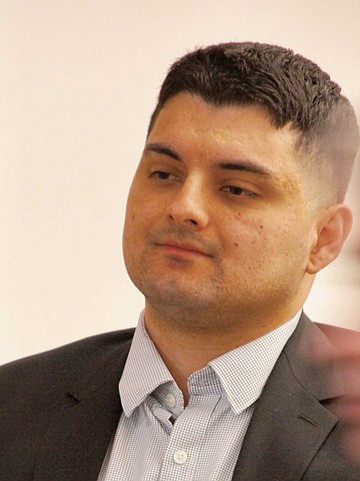
Sandra was the first witness at a jury trial more than a year after the shootout. She remembered it was about 4 pm that Thursday afternoon. “He was calling in to place an order,” Sandra testified. “Then he told me to hold on for a second. Then he asked me to call 911 for him. I just heard a lot of echoing, inside, like if he was running, then I just heard him shouting ‘Call 911! Call 911! They are shooting at me!’”
Sandra continued, “Afterwards, it sounded like banging, but I’m not sure if it was the gunshots or something like that. He had told me that he had been shot, and I felt like he was serious.” The taco shop employee called 911 at 4:19 pm on December 20, 2018. Her recorded phone call was played in court on January 15, 2020.
Shots fired. Shots returned.
When deputies went to the first address, 15628 Adams Drive, they found two elderly persons who were confused about why deputies had come. The deputies were there for about two minutes before the dispatcher gave them the correct address.
They then drove their three patrol cars, all black-and-white Ford Expeditions, out of the driveway and parked on the street, Adams Drive, directly in front of the correct address across the street.
Deputy Avedesian started his body camera early enough to capture the beginning of the gunfire. It began less than 90 seconds after his arrival at the correct address.
Deputy Corey Crawford testified at the trial a year later. He had worked for the Los Angeles Police Department early in his career, and then he made a change and became a San Diego County Sheriff’s deputy. He was 37 years old and had been a local deputy for eight years at the time of the shootout. On that Thursday, he was working overtime out of the Valley Center station. Deputy Crawford said, “In Valley Center, we go to calls with a cover.” That means more than one deputy will respond to each call so officers can cover each other.
Deputy Crawford said his department-issued handgun is a .40 caliber Glock. The magazine holds 15 rounds, and he always has one round in the chamber ready to go, so he has a total of 16 shots available in one load. Plus he has a rifle and shotgun in his patrol car.
Crawford testified that at 3:43 pm he got a call from dispatch for “unknown trouble.” Crawford knew deputy Muli well. They had worked together many times, but Crawford had met Avedesian only once, when the latter had requested a police canine and Crawford delivered the dog. Avedesian had begun his career with San Diego Police, working downtown. At the time of the incident, Avedesian had recently switched over to working for the county sheriff, and he had never been to Valley Center or Pauma Valley before. SDPD was the first local agency to experiment with body-worn cameras, so Avedesian was familiar and comfortable with the technology. He camera was recording as the trio walked up the sloping driveway with the sun in their eyes.
Deputy Crawford recalled later, “I remember hearing the TV,” as he approached the front door. He said that after he knocked, he stepped back a few steps, because he knew that “you could be shot through the door.” There was no window in the door upon which Crawford knocked.
Meanwhile, Avedesian was walking toward the center of the house, where there was a window. His eyes were not blinded by the sunlight, and with his prescription sunglasses he was able to see into the window as they approached. Avedesian later said he could see a shirtless man, holding a pistol, come into view. Avedesian said he believed the man was rushing into a position where he would be able to see the door upon which deputy Crawford had knocked. Avedesian immediately drew his pistol and yelled, “Gun! Gun! Gun! Gun!”
Deputy Crawford later testified, “I remember looking to the door and to the house, because I don’t know what [Avadesian] is seeing, because I had no idea where the suspect was at that point.” Crawford quickly unholstered his gun, but he had no target, and he took cover behind one of the thick wooden beams holding up the patio cover. From his position behind the wooden beam, “I saw inside that window, a male come from the left and into view of where I was standing.” He said the half-naked man pointed a pistol at him and fired one round.
When he testified, deputy Crawford was sure he saw the man with a gun, “Pointed right at me.” He testified, “I saw it and I heard it. I heard the weapon fire and I saw the muzzle flash.” Crawford said he quickly fired three shots in return. Later, he said he was simultaneously scared and angry as he returned fire.
A ballistics expert later testified that one of deputy Crawford’s .40 caliber bullets passed through a wall and lodged in the suspect.
One 10mm bullet from the suspect’s gun lodged in the wall directly below the window inside the house. Another bullet deflected off one of the wooden beams that was holding up the patio cover.
Avedesian returned fire, while he ran sideways to take cover behind a white shed he had seen during the walk up the driveway. It was later determined that Avedesian fired seven shots.
Deputy Crawford retreated backwards and took cover next to a low stone wall that ran along one side of the driveway. Deputy Muli was already crouched there. He was 39 years old, and had been with the San Diego County Sheriff for 15 years at the time of the shooting. He had chosen to walk toward the left side of the home, furthest from the door that Crawford was approaching. Fortunately, Muli did not have enough time to make it to the double doors on that side of the house, which was actually intended to be the main entrance into the home.
A ballistics expert later documented bullet damage in one of the thick wooden doors at the main entrance. There was a neat round hole where a bullet had entered the door from inside. When the 10mm slug exited the door, it created a splintered, larger defect in the wood.
While all three deputies were crouching behind shelter, more shots could be heard coming from the house. All three body cameras captured audio and video of the ongoing shootout.
Avedesian quickly decided that the white shed he was using for shelter was not really sufficient; he believed that the shooter could leave the house by the double doors on that side and use the cover of trees there to approach. Avedesian snapped a fresh magazine into his Glock; he had fired off seven shots (later, he said he had lost count), and he wanted a full load. At the same time, he called out to the other deputies, “Hey I’m stuck here! I need cover!”
Avedesian wanted to leave the shed and try to join the other two deputies at the low stone wall. He called out, “Ready?” Then he took off for the wall.
After Avedesian made it to the spot where Crawford and Muli waited, he said breathlessly, “I dropped a mag but I’m good!” The magazine, still half-full of ammunition, was recovered later by evidence technicians.
The deputies then ran in a crouched position while they retreated downhill, keeping close to the stone wall. They hurried all the way back to their patrol cars parked on the street. Crawford yelled for the others to get their helmets.
Deputy Crawford did not double-tap his body camera until he got back to his patrol car, but because those cameras make a “thirty-second-dump” of prior information, his camera did capture shots fired. (A skeptical defense attorney later wondered why deputy Crawford did not activate his camera earlier. “In a firefight like that, I am not worried about activating my body camera,” Crawford replied. “I am worried about saving my life.”)
At their patrol cars, all the deputies holstered their Glock 22s and grabbed their AR-15 rifles. Deputy Crawford later explained that “the house was made of brick, and the rifle will penetrate the brick if I have to use it.”
Deputy Muli also explained to a jury why he took up the AR-15. “It has more accuracy at distance and more rounds and better ability to penetrate.” Deputy Muli said he was positioned near the back of his vehicle when he saw a bullet hit the dirt hill in front of them, “It was basically a cloud of dust.” On the recordings he could be heard telling the others to “move back, move back” and to take cover behind their cars.
Avedesian said he purposely took a position at his vehicle so that he was sheltered on the other side of the engine block.
Crawford said he was crouched near his car. “I was at the back of my vehicle and I heard impact. It looked like it hit a trash can which was right next to my vehicle.” There was a green plastic trash can between his patrol car and the house above. On his bodycam recording, deputy Crawford is heard saying, “Hey, he just shot that trash can.”
When he testified in court, Crawford described their situation. “I felt like he could see us and we couldn’t see him.” This caused the deputies to re-position themselves continuously by moving around behind different parts of their patrol cars.
Crawford estimated that it took 10 or 15 minutes for more deputies to arrive in support of the three who were pinned down on the street.
Later, it was determined that deputy Crawford fired a total of three shots, deputy Muli five, and Avedesian seven. All these came from their .40 caliber Glock handguns; none of the deputies fired their rifles that day.
The cavalry arrives
Sergeant McElvoy arrived about 6:49 pm to help extricate the suspect, who refused to leave the house. The sergeant was part of Special Enforcement Detail. He said they respond when there are persons “who have committed violent felonies and refuse to surrender themselves.”
“We used an armored vehicle; it is an armored truck,” the sergeant testified in court. “It can carry about 16 deputies and is resistant to ballistic threats.” The special team in the armored vehicle went up the driveway.
The sergeant said he remembered seeing the flickering light of a television in the house at first, but as the armored vehicle progressed up the driveway, that flickering light went off. The special team was not bothered by lack of light. In fact, “We were wearing night vision, we were not using any lights, and the residence was completely dark.” Sergeant McElvoy was explaining to an attorney why he did not see any of the blood smears after they entered the home.
Before they made entry, the team announced themselves, and they tried to get the suspect to come out of the home. They tried to phone him, they announced that they had an ambulance, and they used flash bang grenades and tear gas. They sent in a robot, and the robot dispensed chemicals. But the suspect did not come out.
It was about 9:50 pm when they took Jay out of a bathroom. The sergeant said the suspect had dressed his own wound; there was a bandage on his hip. Jay Nieto was transported to Palomar Hospital.
Weed + gun
It was more than five hours after the shootout had begun that Nieto was transported to hospital and his blood was drawn to be tested. A forensic expert testified that Nieto’s blood showed 13.6 nanograms of Delta 9 THC, tetra hydro cannabinol, the active chemical in marijuana. The expert said this was a “higher” level of THC compared to what they normally see in their lab. She said that THC “likes fatty tissues” and moves from the blood quickly into fat tissue, “and that includes the brain as well.” She said the THC level can drop in as few as three hours, but there is no particular time-frame nor rate in which THC leaves the blood. The expert said that marijuana can be a stimulant or a depressant or a hallucinogenic. “It can elevate your pulse, and dilate your pupils, and increase your blood pressure.” She said it can delay responses or reaction times, interfere with focusing on more than one thing at a time, and can affect learning or recall. She stated that stronger doses can produce paranoia or hallucinations or feelings of anxiety.
The man who used the nickname “Jay” was actually Jose Luis Nieto. He was 28 at the time of the shootout. He survived one .40 caliber bullet, which entered near his right hip and then passed into his intestines. Medical staff recovered bullet fragments from the patient and gave those to sheriff’s investigators.
Nieto was photographed in his hospital bed the next morning by a forensic technician. In the hospital photos, Nieto looked lean and tanned, with thick black hair, a full moustache and beard, and a smile on his face.
When Nieto was in court more than a year later, during trial, his face was pale, and he was clean-shaven. The hair on his head was shaved up the sides and back, leaving a patch of short hair on top. Nieto wore a dress shirt and suit jacket while he sat at the defendant’s table with his private defense attorney. He had been held in lieu of $1 million bail for more than a year, and he was still in custody when his trial began on January 14, 2020. Nieto was 29 years old during his two-week jury trial.
The prosecutor showed evidence photos of a pearl-handled, Colt Delta Elite 10mm semi-automatic pistol that investigators found inside the house. Technicians found five expelled 10 mm cartridges inside; on one end of each cartridge was stamped: 10mm AUTO JAG. Both the pistol and magazine were found on a bed, separated, empty of ammunition.
Inside the home and in a car parked to one side of the driveway, evidence technicians found various marijuana and THC products. There were boxes of STIIIZY pods, a hand-rolled cigarette, bottles of “tincture,” and plastic canisters labeled MEDICAL CANNABIS. The prosecutor described some of these products as “concentrated” or “wax” marijuana. An expert testified that these products can induce paranoia or psychotic episodes.
Technicians collected many cell phones, from the home and car.
Nieto’s private defense attorney made much of the fact that none of the responding deputies used loudspeakers on their patrol cars to announce, “San Diego Sheriff !” before they approached the home. He wondered why the deputies never tried to use a bullhorn, to declare “Deputies!” or “Welfare check!”
Imperfect self-defense
In his closing argument, attorney William Elliott asked, “When did ‘protect and serve’ become ‘us against them?’ It’s sad.” He said, “I am sorry, the deputies did not announce their presence. They could have.”
Attorney Elliott told the jury, “This is a tragic case.”
He pointed out that deputies claimed it was Nieto who shot first, but that was not seen on the video (although the audio recording did seem to confirm it). Further, “He was very, very high on tetra hydro cannabinol.” Elliott suggested that Nieto was probably delusional and hallucinating. “You have to be delusional to not know your own address,” he said.
He pointed out that the jury only saw what the deputies saw, because they were shown recordings from their body cameras. But they did not know what Nieto must have seen. And he said that they must consider that Nieto was the one who got shot. “Once you are shot and bleeding, it is reasonable that you would react,” the attorney told the jury.
The defense attorney argued “imperfect self-defense.” He pointed out that, after all, “Once you get shot, it is pretty reasonable to think that you are going to get shot again.”
He said there was no way of knowing if any bullets fired from the house could even travel as far as the spot where the patrol cars were parked, on the street. And how should Nieto have known those were policemen? “He did not try to shoot three deputies knowing they were deputies,” the attorney asserted.
Prosecutor Chandelle Konstanzer pointed out that Nieto had called and requested both police and ambulance, multiple times, and he was told that deputies were on the way.
She told the jury, “Voluntary intoxication is not a defense.”
After about three hours deliberation, the jury of seven women and five men declared Nieto guilty of three counts of assault on police officers with a semi-automatic firearm.
Nieto could be sentenced to as many as 45 years in prison. His sentencing is set for March 20.


When the deputies arrived at the 15600 Adams Avenue in Pauma Valley, the sun was hovering just above the surrounding hills. It was only hours before winter solstice, and sunset was officially clocked at 4:47 pm on that day: December 20, 2018.
Deputy John Avedesian, 31, was the only one who wore sunglasses; they were prescription, so his vision was perfect. He later said the low sunlight did not bother him. But the other two deputies said that the bright rays shining directly into their eyes were blinding.
Avedesian lifted the simple latch on the white metal gate. There was no lock. It was easy to push the big gate all the way to one side, allowing the deputies to begin the walk up the driveway. It was a two-acre parcel, and the long driveway made a turn near the top, leading to a one-story hacienda-style home at the top of the slope.

The house was perfectly backlit by the lowering sun. Though sunlight glowed around the red tile roof, the structure was just a dark silhouette to the men approaching.
Deputies had responded to a dispatch described as “unknown.” That lack of information made them wary. Avedesian started the camera hanging on his chest and quickly double-tapped it. Without speaking to each other, the deputies spread out as they approached. One deputy walked toward the front door at one end, Avedesian walked toward a window in the middle, and the third deputy walked toward the corner furthest from the front door.
The officers knew it was unwise to be bunched up into one easy target, deputy Jared Muli later explained in court. Thirty-nine-year-old Muli had been with the San Diego County Sheriff for 15 years, and on that day, he was patrolling out of the Valley Center substation, which covers Pauma Valley.

“I’m feeling unsafe”
About 30 minutes earlier, at 3:43 pm, the emergency phone operator had gotten a call from a disturbed man. “Nine-one-one emergency,” she answered, “what are you reporting?”
The man sounded excited. He said, “I need emergency! I just don’t feel safe in my own house!” He gave his address as 15628 Adams Drive in Pauma Valley, and he said his name was Jay.
Jay confirmed his address at least five times during his phone calls to the emergency number. But that 15628 number was not really his home address; that address was actually down the hill and across the road. His true home address was 15600. From the elevated position of the house at 15600, Jay probably could see deputies when they first arrived and went to 15628, across the street.

When he spoke to the emergency operator, Jay said, “I’m reporting I’m feeling a little unsafe in my home. I’m a proud American, ma’am. I’m an RN. I work for a home health agency. San Diego County, ma’am. I just moved here. I love nature.”
The operator was not distracted by his rambling. She asked, “I know you said that you don’t feel safe; is there someone in your home who’s making you not feel safe?”
Jay said, “I just feel, around my home, maybe I just don’t feel safe, ma’am.”

The operator asked, “Okay, do you need police or do you need paramedics?” Jay answered, “I’m a registered nurse ma’am. I need both, ma’am. I’m feeling a little distressed. I’m feeling distressed. My heart is hurting, ma’am.”
The operator was a California Highway Patrol dispatcher, and she tried to pass the call to the San Diego County Sheriff’s dispatcher, but during that time, Jay’s call dropped off. The sheriff’s dispatcher then reconnected with Jay, and she said, “We have a call entered for you not feeling safe at 15628.”
Jay answered, “Yes, I just, yeah, I’m just new to the area ma’am. And I just, I just feel unsafe. Ma’am, if you could get paramedics and the police department.”

The sheriff’s dispatcher wanted to know, “Why do you need paramedics?”
Jay responded, “I just don’t feel safe.” He repeated that he was a proud American. “I’m from here. I just want to speak to someone, what else can I say ma’am?” He told her, “I’m a nurse, I would know when someone’s in an emergency or someone’s in trouble, right?” Jay rambled and cursed. He said that he was 28 years old.
The dispatcher persisted, “Okay, what do you need a paramedic for?” In reply, Jay wondered if he should call the nearby Indian reservation. The dispatcher confirmed his address yet again, and told him that deputies were en route. When she tried to get paramedics on the line to speak with Jay, his call dropped off again.

Next, Jay phoned a co-worker named Cara. They both worked at a home healthcare company; she later confirmed that Jay had been employed there as a registered nurse for about four months. Jay told Cara that he did not feel safe in his home, and he gave Cara the same incorrect house number that he had given the emergency dispatchers. Cara later said that Jay did not sound normal, and she thought he sounded intoxicated, so she phoned 911 at 4:06 pm to request a welfare check for him. Eventually, Cara was able to give the dispatcher Jay’s correct home address.
In the meantime, Jay made another phone call, this one to his favorite Mexican food place. Jilberto’s Taco Shop was only about a mile away. He ordered his usual burrito plate and a Coke. Jay was a regular customer, and he knew the girls who worked there. When he called that late December afternoon, he chatted comfortably with employee Sandra. Sandra later testified in court, “At first, he sounded normal.”

Sandra was the first witness at a jury trial more than a year after the shootout. She remembered it was about 4 pm that Thursday afternoon. “He was calling in to place an order,” Sandra testified. “Then he told me to hold on for a second. Then he asked me to call 911 for him. I just heard a lot of echoing, inside, like if he was running, then I just heard him shouting ‘Call 911! Call 911! They are shooting at me!’”
Sandra continued, “Afterwards, it sounded like banging, but I’m not sure if it was the gunshots or something like that. He had told me that he had been shot, and I felt like he was serious.” The taco shop employee called 911 at 4:19 pm on December 20, 2018. Her recorded phone call was played in court on January 15, 2020.
Shots fired. Shots returned.
When deputies went to the first address, 15628 Adams Drive, they found two elderly persons who were confused about why deputies had come. The deputies were there for about two minutes before the dispatcher gave them the correct address.
They then drove their three patrol cars, all black-and-white Ford Expeditions, out of the driveway and parked on the street, Adams Drive, directly in front of the correct address across the street.
Deputy Avedesian started his body camera early enough to capture the beginning of the gunfire. It began less than 90 seconds after his arrival at the correct address.
Deputy Corey Crawford testified at the trial a year later. He had worked for the Los Angeles Police Department early in his career, and then he made a change and became a San Diego County Sheriff’s deputy. He was 37 years old and had been a local deputy for eight years at the time of the shootout. On that Thursday, he was working overtime out of the Valley Center station. Deputy Crawford said, “In Valley Center, we go to calls with a cover.” That means more than one deputy will respond to each call so officers can cover each other.
Deputy Crawford said his department-issued handgun is a .40 caliber Glock. The magazine holds 15 rounds, and he always has one round in the chamber ready to go, so he has a total of 16 shots available in one load. Plus he has a rifle and shotgun in his patrol car.
Crawford testified that at 3:43 pm he got a call from dispatch for “unknown trouble.” Crawford knew deputy Muli well. They had worked together many times, but Crawford had met Avedesian only once, when the latter had requested a police canine and Crawford delivered the dog. Avedesian had begun his career with San Diego Police, working downtown. At the time of the incident, Avedesian had recently switched over to working for the county sheriff, and he had never been to Valley Center or Pauma Valley before. SDPD was the first local agency to experiment with body-worn cameras, so Avedesian was familiar and comfortable with the technology. He camera was recording as the trio walked up the sloping driveway with the sun in their eyes.
Deputy Crawford recalled later, “I remember hearing the TV,” as he approached the front door. He said that after he knocked, he stepped back a few steps, because he knew that “you could be shot through the door.” There was no window in the door upon which Crawford knocked.
Meanwhile, Avedesian was walking toward the center of the house, where there was a window. His eyes were not blinded by the sunlight, and with his prescription sunglasses he was able to see into the window as they approached. Avedesian later said he could see a shirtless man, holding a pistol, come into view. Avedesian said he believed the man was rushing into a position where he would be able to see the door upon which deputy Crawford had knocked. Avedesian immediately drew his pistol and yelled, “Gun! Gun! Gun! Gun!”
Deputy Crawford later testified, “I remember looking to the door and to the house, because I don’t know what [Avadesian] is seeing, because I had no idea where the suspect was at that point.” Crawford quickly unholstered his gun, but he had no target, and he took cover behind one of the thick wooden beams holding up the patio cover. From his position behind the wooden beam, “I saw inside that window, a male come from the left and into view of where I was standing.” He said the half-naked man pointed a pistol at him and fired one round.
When he testified, deputy Crawford was sure he saw the man with a gun, “Pointed right at me.” He testified, “I saw it and I heard it. I heard the weapon fire and I saw the muzzle flash.” Crawford said he quickly fired three shots in return. Later, he said he was simultaneously scared and angry as he returned fire.
A ballistics expert later testified that one of deputy Crawford’s .40 caliber bullets passed through a wall and lodged in the suspect.
One 10mm bullet from the suspect’s gun lodged in the wall directly below the window inside the house. Another bullet deflected off one of the wooden beams that was holding up the patio cover.
Avedesian returned fire, while he ran sideways to take cover behind a white shed he had seen during the walk up the driveway. It was later determined that Avedesian fired seven shots.
Deputy Crawford retreated backwards and took cover next to a low stone wall that ran along one side of the driveway. Deputy Muli was already crouched there. He was 39 years old, and had been with the San Diego County Sheriff for 15 years at the time of the shooting. He had chosen to walk toward the left side of the home, furthest from the door that Crawford was approaching. Fortunately, Muli did not have enough time to make it to the double doors on that side of the house, which was actually intended to be the main entrance into the home.
A ballistics expert later documented bullet damage in one of the thick wooden doors at the main entrance. There was a neat round hole where a bullet had entered the door from inside. When the 10mm slug exited the door, it created a splintered, larger defect in the wood.
While all three deputies were crouching behind shelter, more shots could be heard coming from the house. All three body cameras captured audio and video of the ongoing shootout.
Avedesian quickly decided that the white shed he was using for shelter was not really sufficient; he believed that the shooter could leave the house by the double doors on that side and use the cover of trees there to approach. Avedesian snapped a fresh magazine into his Glock; he had fired off seven shots (later, he said he had lost count), and he wanted a full load. At the same time, he called out to the other deputies, “Hey I’m stuck here! I need cover!”
Avedesian wanted to leave the shed and try to join the other two deputies at the low stone wall. He called out, “Ready?” Then he took off for the wall.
After Avedesian made it to the spot where Crawford and Muli waited, he said breathlessly, “I dropped a mag but I’m good!” The magazine, still half-full of ammunition, was recovered later by evidence technicians.
The deputies then ran in a crouched position while they retreated downhill, keeping close to the stone wall. They hurried all the way back to their patrol cars parked on the street. Crawford yelled for the others to get their helmets.
Deputy Crawford did not double-tap his body camera until he got back to his patrol car, but because those cameras make a “thirty-second-dump” of prior information, his camera did capture shots fired. (A skeptical defense attorney later wondered why deputy Crawford did not activate his camera earlier. “In a firefight like that, I am not worried about activating my body camera,” Crawford replied. “I am worried about saving my life.”)
At their patrol cars, all the deputies holstered their Glock 22s and grabbed their AR-15 rifles. Deputy Crawford later explained that “the house was made of brick, and the rifle will penetrate the brick if I have to use it.”
Deputy Muli also explained to a jury why he took up the AR-15. “It has more accuracy at distance and more rounds and better ability to penetrate.” Deputy Muli said he was positioned near the back of his vehicle when he saw a bullet hit the dirt hill in front of them, “It was basically a cloud of dust.” On the recordings he could be heard telling the others to “move back, move back” and to take cover behind their cars.
Avedesian said he purposely took a position at his vehicle so that he was sheltered on the other side of the engine block.
Crawford said he was crouched near his car. “I was at the back of my vehicle and I heard impact. It looked like it hit a trash can which was right next to my vehicle.” There was a green plastic trash can between his patrol car and the house above. On his bodycam recording, deputy Crawford is heard saying, “Hey, he just shot that trash can.”
When he testified in court, Crawford described their situation. “I felt like he could see us and we couldn’t see him.” This caused the deputies to re-position themselves continuously by moving around behind different parts of their patrol cars.
Crawford estimated that it took 10 or 15 minutes for more deputies to arrive in support of the three who were pinned down on the street.
Later, it was determined that deputy Crawford fired a total of three shots, deputy Muli five, and Avedesian seven. All these came from their .40 caliber Glock handguns; none of the deputies fired their rifles that day.
The cavalry arrives
Sergeant McElvoy arrived about 6:49 pm to help extricate the suspect, who refused to leave the house. The sergeant was part of Special Enforcement Detail. He said they respond when there are persons “who have committed violent felonies and refuse to surrender themselves.”
“We used an armored vehicle; it is an armored truck,” the sergeant testified in court. “It can carry about 16 deputies and is resistant to ballistic threats.” The special team in the armored vehicle went up the driveway.
The sergeant said he remembered seeing the flickering light of a television in the house at first, but as the armored vehicle progressed up the driveway, that flickering light went off. The special team was not bothered by lack of light. In fact, “We were wearing night vision, we were not using any lights, and the residence was completely dark.” Sergeant McElvoy was explaining to an attorney why he did not see any of the blood smears after they entered the home.
Before they made entry, the team announced themselves, and they tried to get the suspect to come out of the home. They tried to phone him, they announced that they had an ambulance, and they used flash bang grenades and tear gas. They sent in a robot, and the robot dispensed chemicals. But the suspect did not come out.
It was about 9:50 pm when they took Jay out of a bathroom. The sergeant said the suspect had dressed his own wound; there was a bandage on his hip. Jay Nieto was transported to Palomar Hospital.
Weed + gun
It was more than five hours after the shootout had begun that Nieto was transported to hospital and his blood was drawn to be tested. A forensic expert testified that Nieto’s blood showed 13.6 nanograms of Delta 9 THC, tetra hydro cannabinol, the active chemical in marijuana. The expert said this was a “higher” level of THC compared to what they normally see in their lab. She said that THC “likes fatty tissues” and moves from the blood quickly into fat tissue, “and that includes the brain as well.” She said the THC level can drop in as few as three hours, but there is no particular time-frame nor rate in which THC leaves the blood. The expert said that marijuana can be a stimulant or a depressant or a hallucinogenic. “It can elevate your pulse, and dilate your pupils, and increase your blood pressure.” She said it can delay responses or reaction times, interfere with focusing on more than one thing at a time, and can affect learning or recall. She stated that stronger doses can produce paranoia or hallucinations or feelings of anxiety.
The man who used the nickname “Jay” was actually Jose Luis Nieto. He was 28 at the time of the shootout. He survived one .40 caliber bullet, which entered near his right hip and then passed into his intestines. Medical staff recovered bullet fragments from the patient and gave those to sheriff’s investigators.
Nieto was photographed in his hospital bed the next morning by a forensic technician. In the hospital photos, Nieto looked lean and tanned, with thick black hair, a full moustache and beard, and a smile on his face.
When Nieto was in court more than a year later, during trial, his face was pale, and he was clean-shaven. The hair on his head was shaved up the sides and back, leaving a patch of short hair on top. Nieto wore a dress shirt and suit jacket while he sat at the defendant’s table with his private defense attorney. He had been held in lieu of $1 million bail for more than a year, and he was still in custody when his trial began on January 14, 2020. Nieto was 29 years old during his two-week jury trial.
The prosecutor showed evidence photos of a pearl-handled, Colt Delta Elite 10mm semi-automatic pistol that investigators found inside the house. Technicians found five expelled 10 mm cartridges inside; on one end of each cartridge was stamped: 10mm AUTO JAG. Both the pistol and magazine were found on a bed, separated, empty of ammunition.
Inside the home and in a car parked to one side of the driveway, evidence technicians found various marijuana and THC products. There were boxes of STIIIZY pods, a hand-rolled cigarette, bottles of “tincture,” and plastic canisters labeled MEDICAL CANNABIS. The prosecutor described some of these products as “concentrated” or “wax” marijuana. An expert testified that these products can induce paranoia or psychotic episodes.
Technicians collected many cell phones, from the home and car.
Nieto’s private defense attorney made much of the fact that none of the responding deputies used loudspeakers on their patrol cars to announce, “San Diego Sheriff !” before they approached the home. He wondered why the deputies never tried to use a bullhorn, to declare “Deputies!” or “Welfare check!”
Imperfect self-defense
In his closing argument, attorney William Elliott asked, “When did ‘protect and serve’ become ‘us against them?’ It’s sad.” He said, “I am sorry, the deputies did not announce their presence. They could have.”
Attorney Elliott told the jury, “This is a tragic case.”
He pointed out that deputies claimed it was Nieto who shot first, but that was not seen on the video (although the audio recording did seem to confirm it). Further, “He was very, very high on tetra hydro cannabinol.” Elliott suggested that Nieto was probably delusional and hallucinating. “You have to be delusional to not know your own address,” he said.
He pointed out that the jury only saw what the deputies saw, because they were shown recordings from their body cameras. But they did not know what Nieto must have seen. And he said that they must consider that Nieto was the one who got shot. “Once you are shot and bleeding, it is reasonable that you would react,” the attorney told the jury.
The defense attorney argued “imperfect self-defense.” He pointed out that, after all, “Once you get shot, it is pretty reasonable to think that you are going to get shot again.”
He said there was no way of knowing if any bullets fired from the house could even travel as far as the spot where the patrol cars were parked, on the street. And how should Nieto have known those were policemen? “He did not try to shoot three deputies knowing they were deputies,” the attorney asserted.
Prosecutor Chandelle Konstanzer pointed out that Nieto had called and requested both police and ambulance, multiple times, and he was told that deputies were on the way.
She told the jury, “Voluntary intoxication is not a defense.”
After about three hours deliberation, the jury of seven women and five men declared Nieto guilty of three counts of assault on police officers with a semi-automatic firearm.
Nieto could be sentenced to as many as 45 years in prison. His sentencing is set for March 20.
Comments